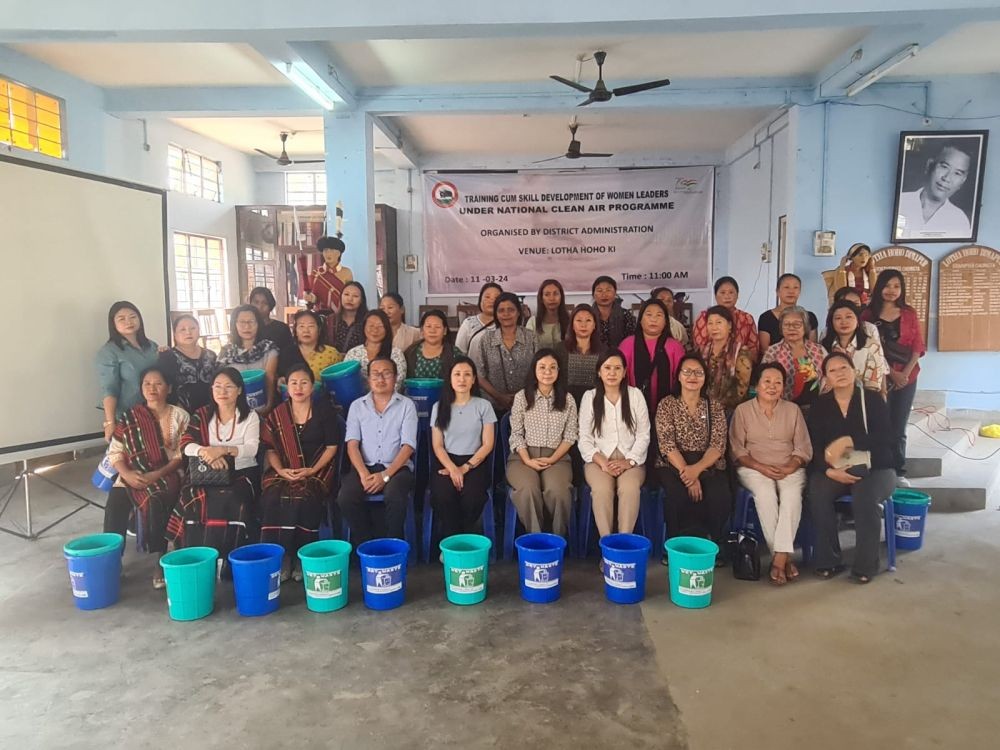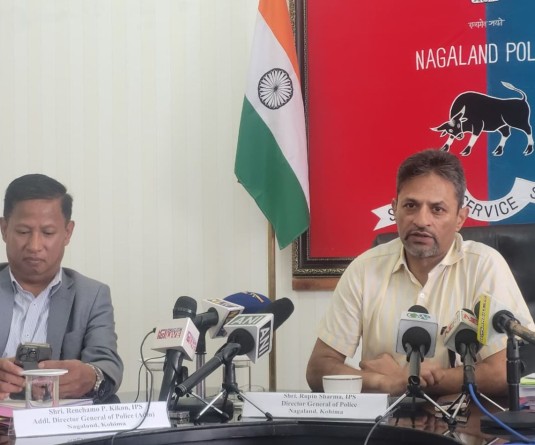Waste dustbin distributed to Women's leader at the Training cum skill development of Women's leader under National Clean Air Programme at Lotha Hoho Ki, Dimapur on March 11. (DIPR Photo)

Dimapur, March 11 (MExN): The District Administration of Dimapur organised training cum skill development of women leaders under National Clean Air Programme in at Lotha Hoho Ki in Dimapur on March 11.
A DIPR report stated that Imlijungla Lemtur, EAC Dimapur in her welcome address noted that Dimapur as one of the two cities in Nagaland which has been declared non-attainment city as the air quality standards of Dimapur has been below nation average for five consecutive years. Citing burning of waste as one of the reason for polluted air, she stressed on the importance of efficient waste management techniques for reducing air pollution.
Manpai Phom, NCS Administrator DMC, emphasised on the importance of action in community and household level. He informed that pilot project for door to door waste collection has already been initiated in Duncan and Riverbelt Colonies where smaller trucks are making two-three rounds of collection and households are disposing segregated waste. He reiterated that handholding in conjunction with community and household participation was the need of the hour in tackling the issue of waste management
In the Technical Session, Olivi G Chophy, Senior Scientific Assistant, Nagaland Pollution Control Board (NPCB) in her presentation urged the Women Leaders to use the knowledge of what they have learn from the training to bring a brighter future and to teach not only herself but all the members in the family and to the society as a whole, as air pollution target mostly children and elderly people.
Workshop on waste management techniques was delivered by Team PRO RURAL. India produces 1.6 lakh MT per day and Global waste is expected to grow to 3.40 billion tonnes by 2050, he informed. According to The Morung Express in February 25, 2022, Dimapur and Chümoukedima with combined, generated 115 MT per day which was 70% from collected and disposal at the trenching ground and 30% from littered in the drain, lanes, rivers and corners.




